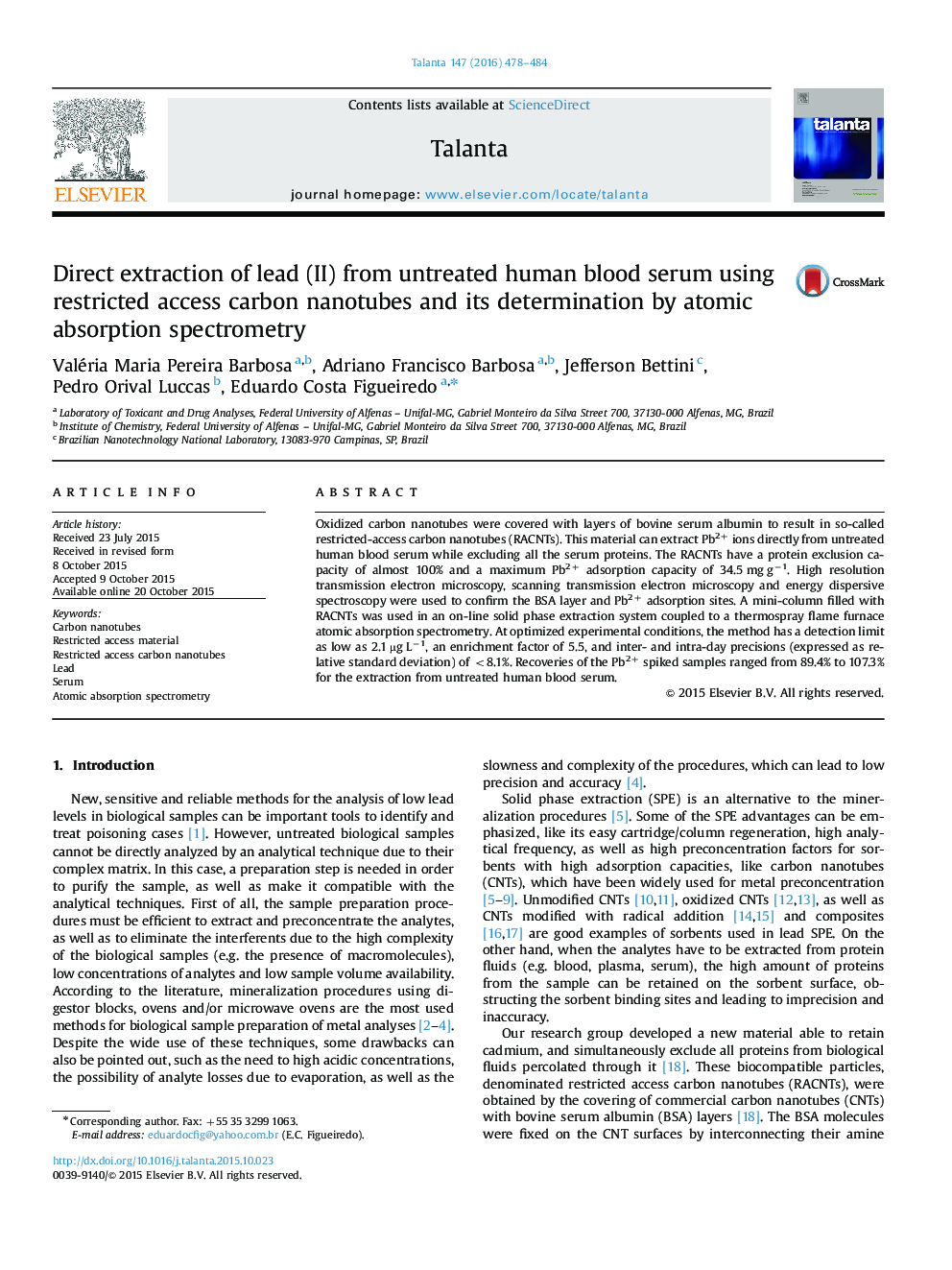| کد مقاله | کد نشریه | سال انتشار | مقاله انگلیسی | نسخه تمام متن |
|---|---|---|---|---|
| 1242784 | 1495788 | 2016 | 7 صفحه PDF | دانلود رایگان |

• Metal bind sites of the restricted access carbon nanotubes (RACNTs) were mapped.
• RACNTs were able to extract lead and to exclude all proteins from the samples.
• Proteins were excluded by electrostatic repulsion.
• A method was suitably validated for the lead analysis from human serum samples.
Oxidized carbon nanotubes were covered with layers of bovine serum albumin to result in so-called restricted-access carbon nanotubes (RACNTs). This material can extract Pb2+ ions directly from untreated human blood serum while excluding all the serum proteins. The RACNTs have a protein exclusion capacity of almost 100% and a maximum Pb2+ adsorption capacity of 34.5 mg g−1. High resolution transmission electron microscopy, scanning transmission electron microscopy and energy dispersive spectroscopy were used to confirm the BSA layer and Pb2+ adsorption sites. A mini-column filled with RACNTs was used in an on-line solid phase extraction system coupled to a thermospray flame furnace atomic absorption spectrometry. At optimized experimental conditions, the method has a detection limit as low as 2.1 µg L−1, an enrichment factor of 5.5, and inter- and intra-day precisions (expressed as relative standard deviation) of <8.1%. Recoveries of the Pb2+ spiked samples ranged from 89.4% to 107.3% for the extraction from untreated human blood serum.
Figure optionsDownload as PowerPoint slide
Journal: Talanta - Volume 147, 15 January 2016, Pages 478–484